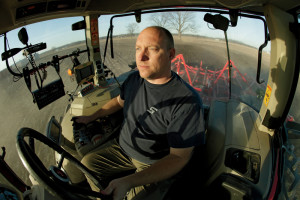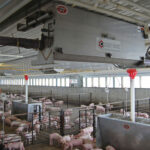When The Levee Breaks
It’s with mixed feelings that Darren Littleton guides a bulldozer through an abandoned farmyard to add to his family’s farmland in Dalton, MO. Yet, to Darren and his dad, Robert “Bob” Littleton, this land also serves as a reminder of...
When The Levee Breaks
It’s with mixed feelings that Darren Littleton guides a bulldozer through an abandoned farmyard to add to his family’s farmland in Dalton, MO. Yet, to Darren and his dad, Robert “Bob” Littleton, this land also serves as a reminder of...It’s with mixed feelings that Darren Littleton guides a bulldozer through an abandoned farmyard to add to his family’s farmland in Dalton, MO. Yet, to Darren and his dad, Robert “Bob” Littleton, this land also serves as a reminder of the diminishing number of farmers.
Due to the effects of the flood of 1993 and the consolidation of farms, the population of Dalton had declined to just 17 people in the 2010 census. Ironically, that flood 30-plus years ago almost put Darren out of business, too.
“That was the first year I farmed full time,” Darren says. “And between Dad and me, we lost all but 6 acres of crops in the flood. Dad even lost his house due to all the water damage.”
Today, this father-and-son team continually looks for ways to control costs, all the while expanding the operation, which now consists of about 2,500 acres of mostly corn and soybeans. For instance, they’ve purchased parcels in the area that need some work. Equipped with their own hydraulic excavator, tracked dozer, skid-steer loader and land leveler, they’ve cleared land themselves. They also run Massey Ferguson and other farm equipment, because, in part, of its versatility, durability, and fuel efficiency, say the Littletons.
Then, too, in order to conserve costs and preserve the land, they’ve changed the way they farm. For example, instead of disking fields as they once did, they now use a Sunflower® Model 6631 VT for vertical tillage. As a result, they’re able to leave the majority of residue on the soil surface, while still providing minimal tillage and creating channels for moisture penetration.
Also, with only 500 or 600 of the 2,500 acres leased or rented, they prefer to own their land. “Every time you look at cash-renting a field,” says Darren, “there are usually three guys in line ahead of you who are willing to pay more. Our feeling is if you’re going to have to pay $300 or more per acre for rent, you might as well go through Farm Credit and own it in 20 years.”
Read more at http://www.myfarmlife.com/crops/when-the-levee-breaks/.




